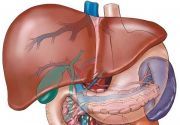Article
Estimated Number of People with Hepatitis C in US Declines to 2.7 Million
Author(s):
Estimates from a national survey indicate that there are 2.7 million people in the United States who are chronically infected with Hepatitis C virus (HCV), a decline over previous years.

Estimates from a national survey indicate that there are 2.7 million people in the United States who are chronically infected with Hepatitis C virus (HCV), a decline over previous years.
Researchers analyzed data collected from the National Health and Nutrition Examination Survey (NHANES) of 30,074 participants from 2003 to 2010 to estimate the prevalence of chronic HCV and to identify factors associated with the condition. The results were published online in the March issue of Annals of Internal Medicine.
Hepatitis C is a blood borne virus that inflames the liver and can lead to cirrhosis and cancer of the liver. It is the leading cause of liver transplants in the U.S. HCV may go unnoticed in many people because symptoms often don’t appear until the virus has severely damaged the liver.
Previous estimates from the Centers for Disease Control and Prevention (CDC) placed the number of people in the U.S. who are infected with chronic HCV at 3.2 million from 1992 to 2002. The newer estimates show a decline of about 500,000 cases, nevertheless a considerable number of people who could become severely ill if not identified and treated.
Knowledge of the HCV population size is critical for public health and policy planners, say the survey authors. Often considered a silent killer because of the lag time between infection and symptoms, the CDC recommends that all baby boomers be tested for HCV. Recipients of blood transfusions or organ transplants before July 1992 are at higher risks of HCV infection because screening blood for the infection was less common than it is now.
The survey of the U.S. civilian household population excluded people who were homeless, in jail, or in other institutions. Researchers conducting the national survey gathered demographic characteristics and information about possible risks and exposures to the virus. They tested serum samples from participants 6 years old or older to identify antibody to HCV. Positive or indeterminate test results were then tested for HCV RNA, which indicates current chronic infection.
Of the sample population tested, about 1% or 273 participants out of roughly 30,000 were positive for HCV RNA, corresponding to an estimated 2.7 million chronically infected persons in the U.S. noninstitutionalized civilian population. Survey results indicated that those infected were more likely to be 40-to-59-year-old, non-Hispanic black men and have less education and lower family income.
Illicit drug use that includes injection drugs and being a recipient of a blood transfusion before 1992 were 2 significant factors associated with HCV infection. However, slightly less than half (49%) of survey participants who were HCV positive did not report either of these risk factors.
Researchers say the survey results underscore why it is urgent to identify the millions of people who have the virus so they can be treated.





